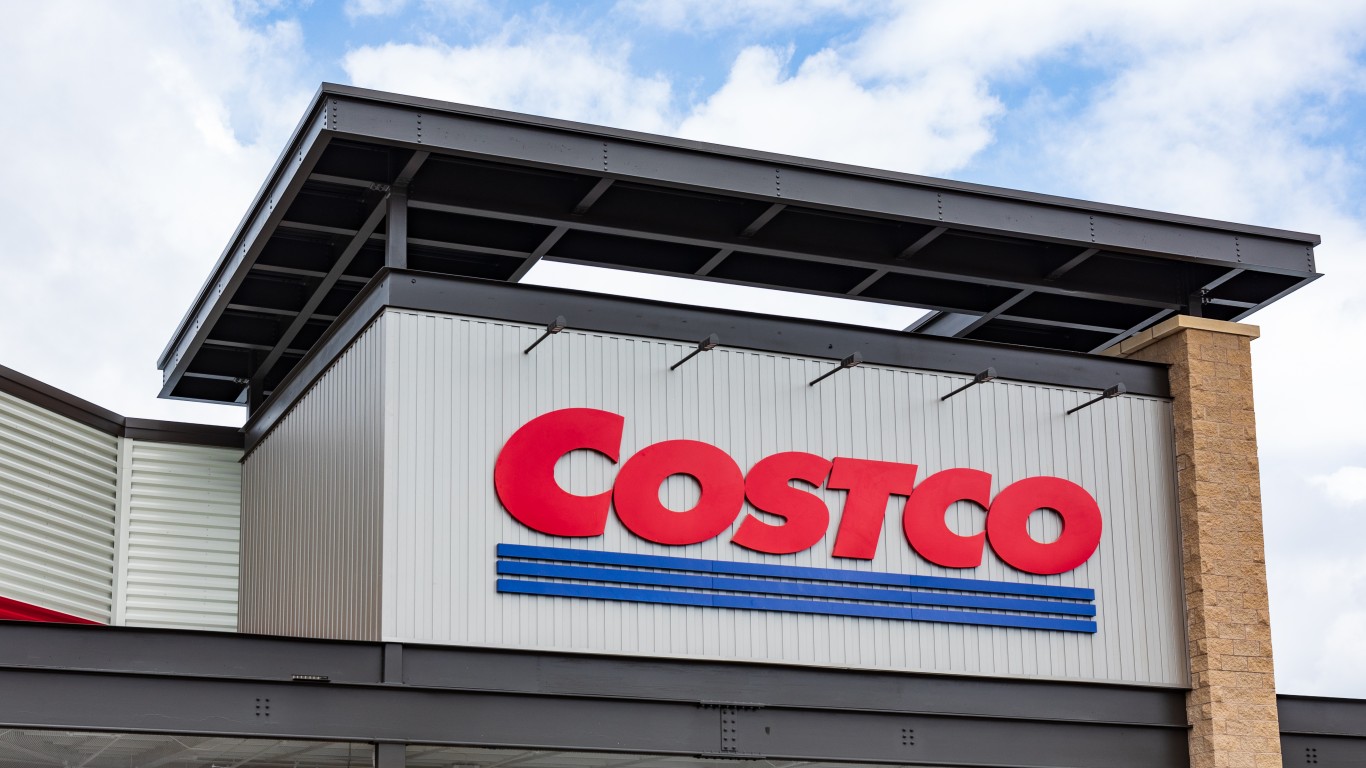
Once you read the terse press release announcing Amazon.com Inc.’s (NASDAQ: AMZN) acquisition of Whole Foods Market Inc. (NASDAQ: WFM), a first reaction might be to question the sanity of Jeff Bezos. Betting against Bezos is a risky business, however, and investors’ reaction to the news was to push Amazon’s stock higher.
The $13.7 billion acquisition ($42 in cash for each outstanding share of Whole Foods) should strike fear into the hearts of grocery chains like Kroger Inc. (NYSE: KR), which yesterday posted a new 52-week low after reporting so-so earnings and lowering guidance. Supervalu Inc. (NYSE: SVU), Sprouts Farmers Markets Inc. (NASDAQ: SFM) and United Natural Foods Inc. (NASDAQ: UNFI) all traded down in double-digits following the Amazon announcement.
The obvious target, though, is Wal-Mart Stores Inc. (NYSE: WMT) which has spent heavily on its e-commerce efforts as a counter to Amazon’s threat to Wal-Mart’s brick-and-mortar business.
Last year, 56% of Wal-Mart’s 2016 revenues were down to grocery sales, and Wal-Mart added about 600 locations across 100-markets to its online grocery pickup service last year, with plans to roll out another 500 locations this year. Amazon has tested a similar service in Seattle but has limited the trial to company employees only.
There’s a lot at stake. Analysts at Cowen estimated that just 5% of U.S. grocery sales were completed online in 2016, but that percentage could more than double to 12% in the next five years. The analysts also estimated that Amazon’s grocery sales market share would lift it from the ninth largest in 2017 to the third largest by 2021. That estimate was cited more than two months ago by NBR.
Offering grocery ordering online has brought new customers to Wal-Mart. According to a report from research firm InfoScout, 42% of Wal-Mart’s regular monthly shoppers are also Amazon Prime members. You can bet that Amazon wants them back — or at least not shopping at Wal-Mart for groceries.
What Whole Foods brings to the party is more than 460 physical locations across the United States, Canada and the United Kingdom that can add some push to Amazon’s impact on grocery sales. The company’s sagging fortunes also made it an attractive buy, on top of which Amazon couldn’t afford to wait much longer.
Germany’s Lidl, one of the world’s largest retailers, opened 10 small-format grocery stores in Virginia and the Carolinas this week and plans to have 100 stores within a year along the east coast. Aldi, another giant German retailer, already operates 1,650 U.S. stores and plans to drive that total to 2,500 by 2022.
Both are direct competitors of Wal-Mart, which makes them friendly enemies of Amazon’s, at least for now. Wal-Mart will have to fight a two-front war — seldom easy and never cheap — while Amazon chips away at it from one side and Aldi and Lidl chip away at the other.
Amazon is also wary of letting two deep-pocketed retailers play on its turf without offering a challenge. U.S. grocery chains are weak and getting weaker all the time. The German entrants are strong and Amazon can’t let them gain strength at its own expense in the United States.
Amazon, used to the minuscule margins that grocery stores are able to manage and armed with a nosebleed-level share price, has seen an opportunity to weaken Wal-Mart and jumped on it.
Amazon shares traded up more than 3% after about an hour of trading Friday, at $995.95 in a 52-week range of $682.11 to $1,016.50.
Wal-Mart traded down about 6%, at $74.06 in a 52-week range of $65.28 to $80.47.
Whole Foods traded up about 27% at $41.95, after hitting 52-week high of $42.35 earlier. The stock’s 52-week low is $27.67.
Kroger’s shares have dived another 13.6% today, to trade at $21.22, after posting a second consecutive 52-week low of $20.46 earlier. The stock’s 52-week high is $27.97.
Sprouts stock traded down more than 8%, at $20.56 in a 52-week range of $17.38 to $25.98.
Supervalu shares traded down nearly 16% to $3.16, after posting a new 52-week low of $2.93 earlier. The 52-week high is $5.74.
United Natural Foods traded down more than 17% at $32.83, after posting a new 52-week low of $29.53, against a 52-week high of $52.18.
Are You Ahead, or Behind on Retirement? (sponsor)
If you’re one of the over 4 Million Americans set to retire this year, you may want to pay attention.
Finding a financial advisor who puts your interest first can be the difference between a rich retirement and barely getting by, and today it’s easier than ever. SmartAsset’s free tool matches you with up to three fiduciary financial advisors that serve your area in minutes. Each advisor has been carefully vetted, and must act in your best interests. Start your search now.
Don’t waste another minute; get started right here and help your retirement dreams become a retirement reality.
Thank you for reading! Have some feedback for us?
Contact the 24/7 Wall St. editorial team.




